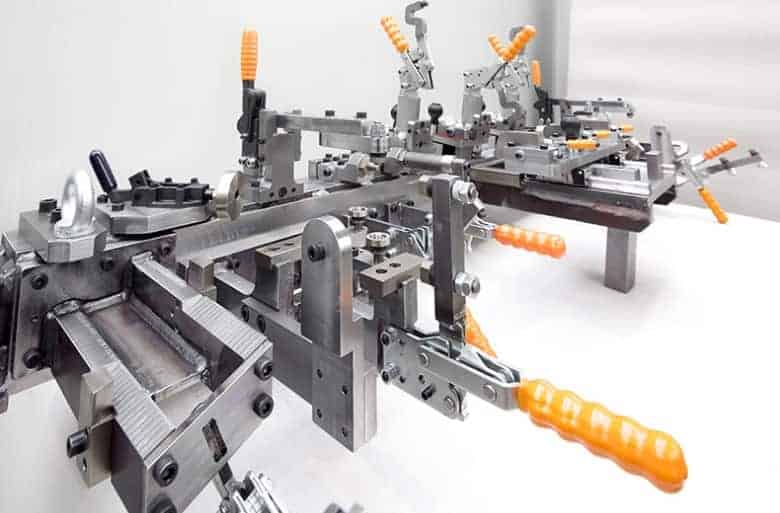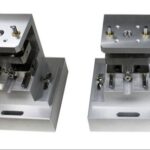1. Define the term Tool design.
Tool design is the process of designing and developing the tools, methods, and techniques necessary to improve manufacturing efficiency and productivity.
2. Name the various operations that can be performed using Jig and Fixture.
Jig is usually lighter in construction. Jigs are used on drilling, reaming, tapping and counter boring operation.
3. How are the supporting loading surfaces made?
Loading and supporting surface usually made of hardened material and also it should be renewable wherever possible.
4. What are production devices?
Production devices are generally work holding devices such as work holders with/without tool guiding/setting arrangement. These are generally called as jigs and fixture
5. Define jig.
A jig may be defined as a work holding device which locates and holds the component for a specific operation. It is also provided with tool guiding elements.
6. What are inspection devices?
Inspection devices are used to check the accuracy of the machined components. It facilitates the interchangeability and uniformity of the produced components.
7. State the purpose of jigs and fixtures.
Jigs and fixtures are the devices which are designed for holding, supporting and locating the work piece and to guide the tools.
8. State the use of jigs and fixtures.
These devices are used to produce a repetitive type of work piece with “zero defects”. But these are economical in mass production only. Jigs and fixtures are designed to save production time, to maintain dimensional accuracy, to facilitate quick and interchangeable assembly.
9. Classify the clamping devices
a. Mechanical actuating clamps
b. Power clamps
10. Mention any four types of mechanical actuating clamps.
a. Screw clamps
b. Strap clamps
c. Latch clamps
d. Wedge or key clamps
11. Define stack clamping.
It is also called as a heel clamping. It consists of a robust plate or strap, center stud and a heel pin. When the clamping nut is unscrewed, the clamp will be automatically pushed upwards by the spring to make the work piece free. Then the clamp is rotated in anti-clockwise direction and the work piece is removed
12. List out some of the power clamping.
a. Hydraulic clamps
b. Pneumatic clamps
13. What is the primary function of a linear bushing/
These bushes are used to guide both renewable and slip bushes and sometimes they also used as a guide to tools.
14. List the standard parts used in jigs and fixtures fabrication.
a. Bases
b. Rest buttons
c. Ping
d. Feet
e. Lift rings
f. Drill bushes
g. Threaded fasteners
h. Clamps and pressure feet
i. Rigidity and stability
j. Safety
15. Name some materials commonly used in jigs and fixtures.
a. High speed steel
b. Die steel
c. Carbon steel
d. Collect steel
e. Oil Hardening Non-shrinking tool steel
f. Cast iron
g. Nylon or fiber
h. High tensile steel
16. What are the advantages of conical locator?
Conical locator are preferred over the cylindrical locators where it is necessary to accommodate variation in the hole diameters of the work piece without affecting the accuracy in location.
17. Mention the locating methods.
a. Pin and Button locators
b. V-Locators
c. Bush locators
d. Nest or Cavity locators
18. What are the essential features of jigs?
a. Reduction of idle time b. Cleanliness
c. Provision for coolant d. Hardened surface
e. Fool proofing
f. Position of clamp
19. What is meant by 3-2-1 principle of location?
According to this principle, a work piece can be completely restrained by providing three location points in one plane, two location points in the second plane and one location point in the third plane. Therefore it is called 3-2-1 principle of location.
20. What are the elements of jigs and fixtures?
a. Locating elements
b. Clamping elements
c. Tool guiding and setting elements.


